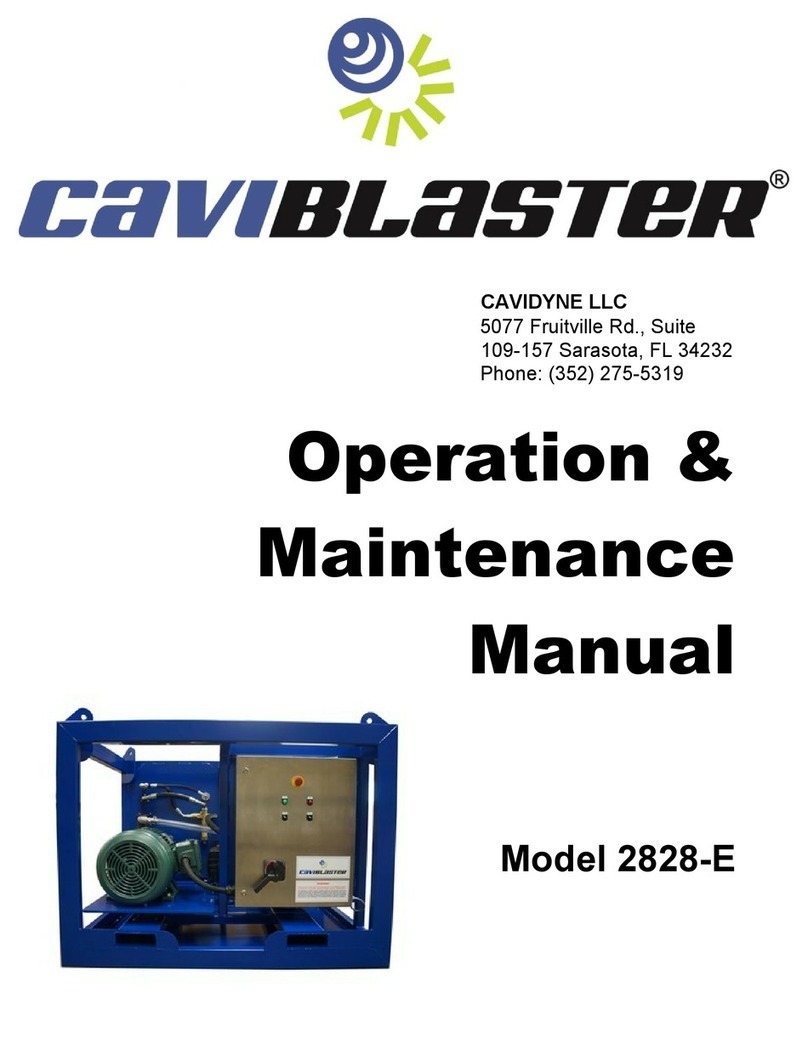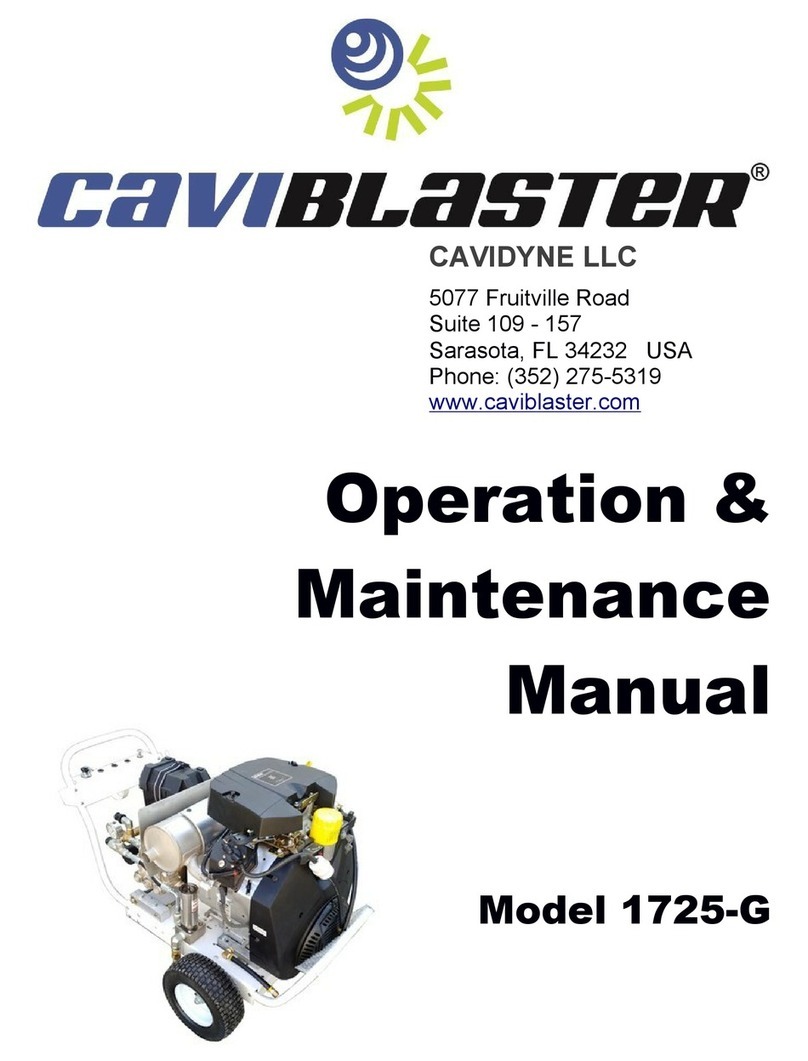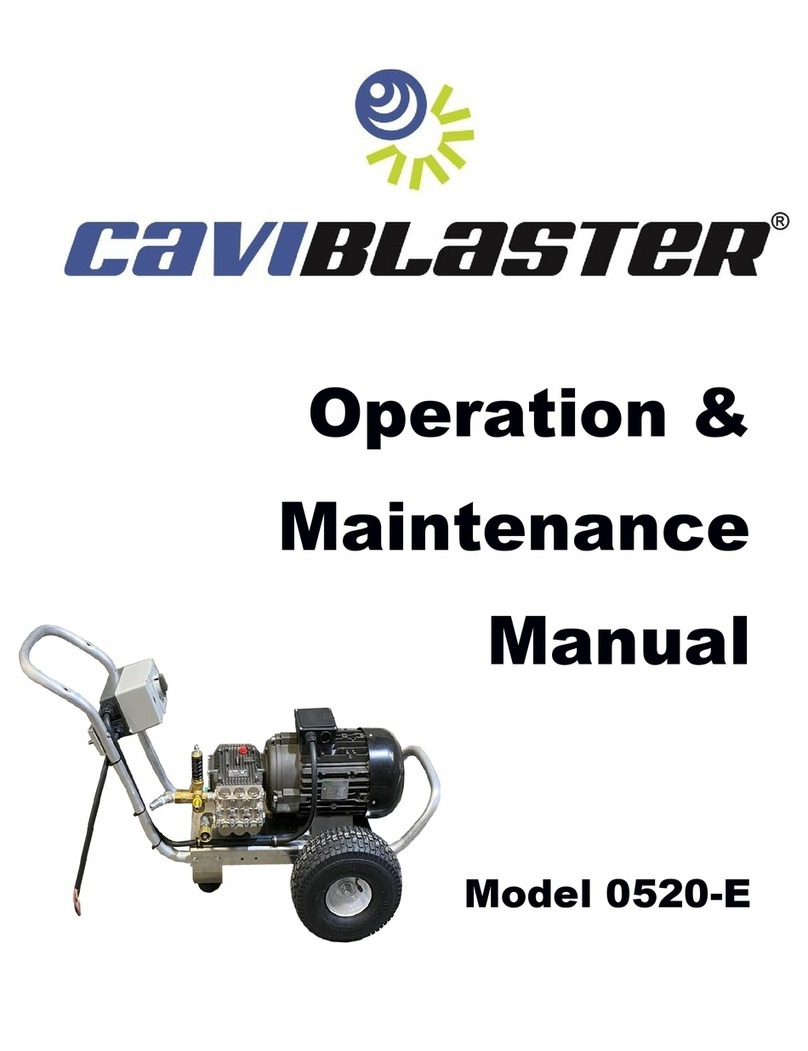
Adjus ing he CaviBlas er® sys em for maximum performance:
1. If using a calibration pressure gauge situated between the pressure hose and the CaviBlaster®
gun, the water pressure should be 2,500-psi with the gun submerged and the gun trigger in
the open or “ON” position. The pressure is adjusted by turning the nuts on the end of the
pressure-regulating unloader (Figure 20). This adjustment increases or decreases the flow of
water through the bypass hose when the CaviBlaster® gun trigger is in the open or “on”
position. The flow of water through the bypass hose, in turn, determines the flow of water
through the pressure hose and the gun. Less flow through the bypass hose means more flow
through the gun which translates to higher velocity and pressure. There should always be a
trickle of water through the bypass when the gun trigger is in the open or “ON” position. This
ensures that the bypass will open without a pressure shock wave damaging the pump when
the gun trigger is released to the closed position.
2. If using a pressure gauge located on the
CaviBlaster® power unit, the water pressure
will need to be higher to account for sidewall
friction loss in the pressure hose. The pressure
at the pump should be 2,500-psi plus 0.75-psi
per foot of pressure hose. For example, if using
the CaviBlaster® with 100 feet of pressure
hose, the pressure gauge located next to the
pump should indicate 2,575-psi. Pressure
adjustments are made in the same manner as
described above. There should always be a
trickle of water through the bypass when the
gun trigger is in the open or “ON” position.
Figure 20
. If adjusting the CaviBlaster® without a pressure gauge, close the pressure-regulating unloader
until there is just a trickle of water (less than ¼ gallon per minute) coming out of the bypass
with the gun trigger in the open or “ON” position.
Page - 9
CaviBlaster 1325-G Operations Manual
For More information please email sales@cavidyne.com or call 1-(352)275-5319
































